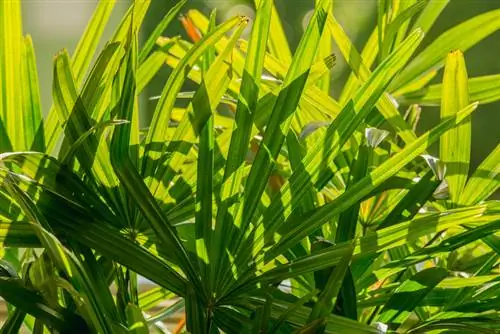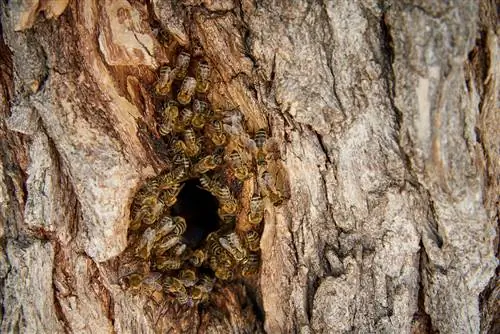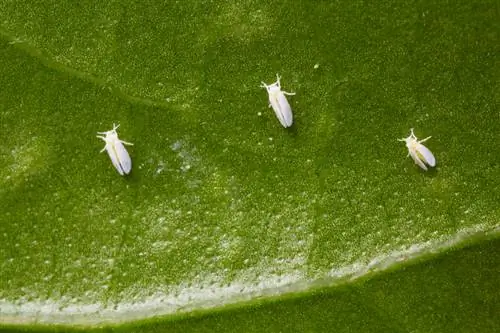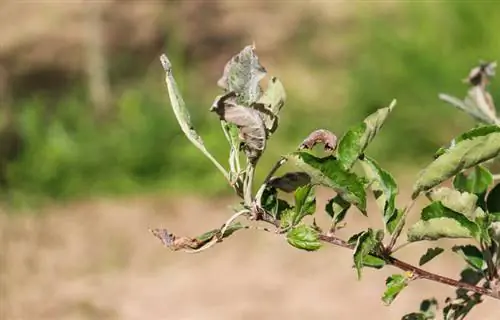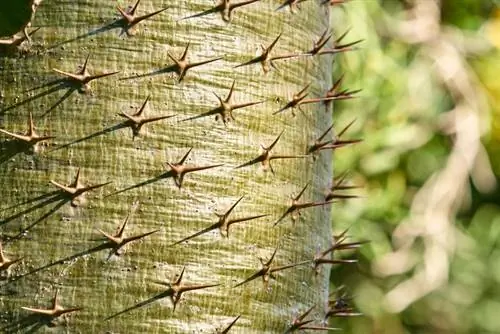- Author admin [email protected].
- Public 2023-12-16 16:46.
- Last modified 2025-01-23 11:20.
Palm plants are generally quite robust and rarely suffer from plant diseases. Nevertheless, it is important to recognize these as early as possible and treat them correctly. If this is not done, the plant can be so weakened that it even dies.
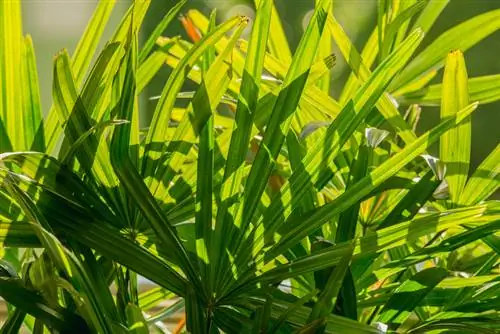
What diseases can affect palm trees and how to treat them?
Palm trees can suffer from sooty mold, root rot or heart/spear rot. Soot mold can be wiped off with a water-vinegar solution and pests can be treated with suitable products. In the event of root rot, the substrate must be prevented from becoming waterlogged. For heart/spear rot, dryness and air circulation and possibly Chinosol treatment will help.
How do you recognize illnesses?
Diseases usually first appear on the leaves. These can:
- softening
- change color (initially yellow and later brown
- dry up
- or show toppings.
Sootdew
If you discover black, often star-shaped deposits on the fronds, the sooty mold fungus is almost always responsible. Although it inhibits photosynthesis, this is not life-threatening for the plant.
If you look closely at the palm tree, you will often find lice, as the fungus often settles on the excretions of the harmful insects.
Combat
You can easily wipe off the black layer with a cloth soaked in a water and vinegar solution. Take this opportunity to examine the palm tree for pest infestation and combat aphids, mealybugs or spider mites with a suitable agent.
Root rot
If the leaves of the palm tree begin to wilt despite being watered regularly, it is often suffering from root rot. Rot fungi could spread in the waterlogged substrate and damage the roots. The plant's lifelines can no longer fulfill its task of transporting water and the plant dries up.
Remedy
Carefully lift the palm tree out of the pot. You can usually smell an unpleasant musty smell straight away. The substrate feels like a wet sponge. The roots are no longer white and crunchy, but mushy brown.
- Remove the old substrate as much as possible.
- Cut off all damaged root parts.
- Place the palm tree in a planter with good drainage, into which you also add a drainage layer of expanded clay.
- In the future, water significantly less and only when the top centimeters of soil feel dry.
- Tip away any excess water in the planter after a few minutes.
Heart or spear rot
For many palm trees that are overwintered outdoors, it is not the cold that means death, but heart rot. What happened? Wrapping it thickly in protective materials can cause moisture to build up in the heart. Only a little air gets to the plant, so it doesn't dry out. This promotes rot. Frost damage also promotes spear and heart rot.
As a result, the fronds look worn out, some show mold and can be easily pulled out of the heart.
Remedy
- Do not cut off the diseased leaves, as they serve as valuable nutrient stores for the plant.
- Only “pull” completely dead fans carefully.
- Keep the plant airy, dry and warm.
- You can sprinkle a crushed tablet of Chinosol (€28.00 on Amazon) (pharmacy) into the heart. Many palm tree fans report surprising successes through the use of this medicine from human medicine and they were able to nurture the palm tree again through good care.
Tip
For all palm tree diseases, it is recommended to isolate the plant from other plants. If you also examine your other houseplants thoroughly, you can treat them accordingly in the early stages of illness.

